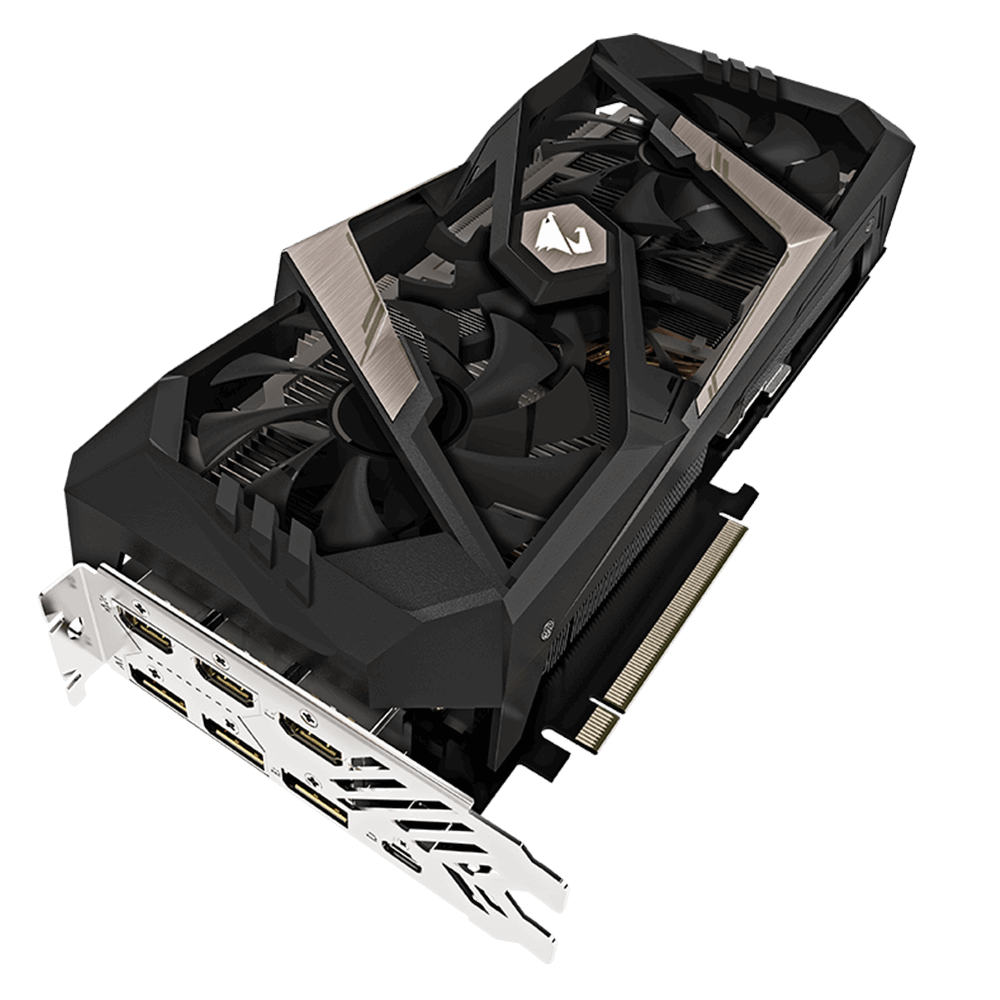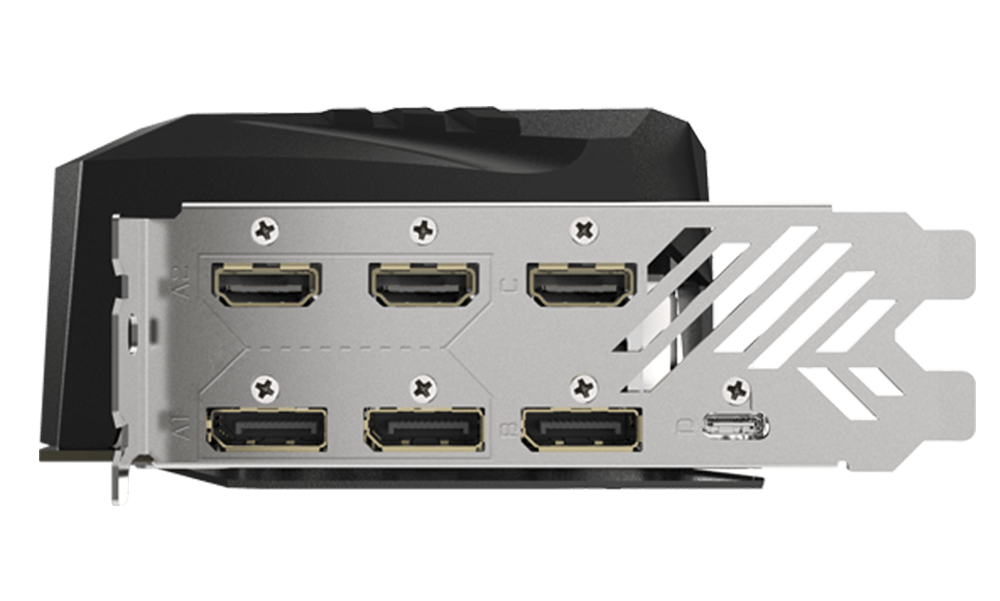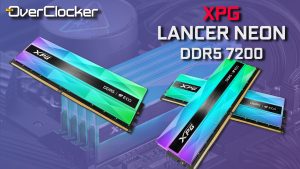AORUS RTX 2070 XTREME Review
The Hardware
By and large, graphics cards look great these days. Features which used to be the exclusive domain of the high end products, have found themselves into just about all gaming graphics cards. The AORUS Xtreme here is a fine example of some of the more interesting things which can be done with RGB LEDs. some may feel it’s a little over the top and I for one can certainly see that, but with the customization options at your disposal courtesy of the AORUS Engine Software.
GIGABYTE’s WINDFORCE Stack 3X cooling solution is obviously what is largely responsible for the look of this graphics card. It isn’t small by any measure, but is certainly not the worst offender in GPU cooler sizes as that honor belongs to the current RTX ROG STRIX line of GPUs.
The big sell for GIGABYTE’s latest cooling mechanism are the double ball bearing 100mm fans. Many other graphics cards use three fans, but the difference here is that the inside fan, spins clockwise, while the two on either side spin counter-clockwise. This reduces turbulence where the inside fan would otherwise push air in the opposite direction of the other two. GIGABYTE may not be the first to implement such a system, but that isn’t as important as the fact that is works pretty well, well and of course has the added benefit of mitigating noise as well.
Cooling isn’t limited to this as the fans push air through a familiar heatsink complex, featuring what GIGABYTE terms it’s angular fin design, The claim here is that with the unequal and angled fins, the air flows better, while the fin surface area is increased. These two changes should result in better cooling and lower noise. Again, it’s difficult to say how much of a difference each of these make, but together they seem to have the desired effect, as temperatures or at least GPU core temperatures were at no point a concern. That said, as that this is GIGABYTE’s 2nd highest RTX 2070 model (Assuming there may be an RTX 2070 Water Force model coming), and certainly their premier air-cooled SKU, one would have expected an even beefier cooler. For as competent as this one is, a beefier cooler would help maintain a higher boost clock during load, which from the testing, this card is most certainly capable of.
That aside, complementing the cooling system on the Xtreme, is a rear back plate which has the obvious benefits of protecting SMDs and helping with component cooling. It feels rather thin, but does get warm during operation so at the very least it assists in dissipating some heat. The big sell here isn’t the back plate actually, but the cut out illuminated AORUS logo. This motif is independently lit and functions as a separate zone from the others. In the right case and with complementary hardware, it can look quite appealing. That said, you can turn it off as with all other LEDs if it just isn’t your kind of thing.
Even without the LED’s the AORUS model does look appealing and the brushed metal pattern on the plastics does help sell the cooler as being a lot sturdier and robust than it actually is. As far as GPUs are concerned, this yet another eye catching addition from GIGABYTE, it will most certainly not be for everyone, but I’ve not come across anyone who is completely put off by the look thus far.
In terms of PCB design, GIGABYTE hasn’t done anything to write home about but they have upgraded the power delivery system offering a 10+2 (10 phases for the GPU and two phases for the memory) solution as opposed to the reference 6+2 design. This doesn’t translate into anything you can use out the box, but when running the card at the overclocked settings, the improved power delivery will make sure to keep the clocks consistent and any power related performance capping can largely be eliminated (within NVIDIA’s guidelines of course). For the extreme overclocker, this may not be the card for you. It uses a familiar uP9512 voltage controller and there are some voltage modifications you can try. Finding an XOC BIOS for the GPU may prove difficult and as such the overclocking credentials that GIGABYTE touts are moot at best. The value in this card simply isn’t in XOC nor is it in any meaningful way built for that.
You are here: Page 2











